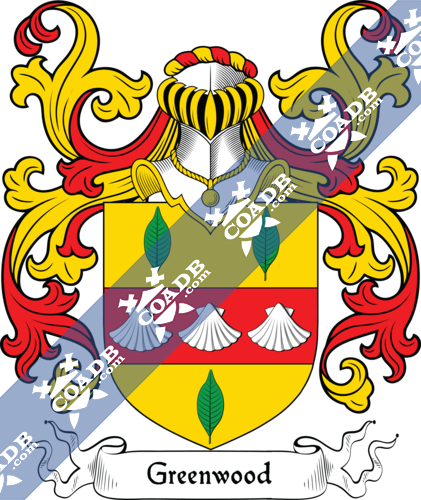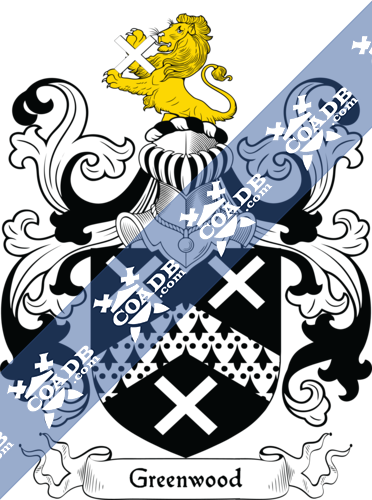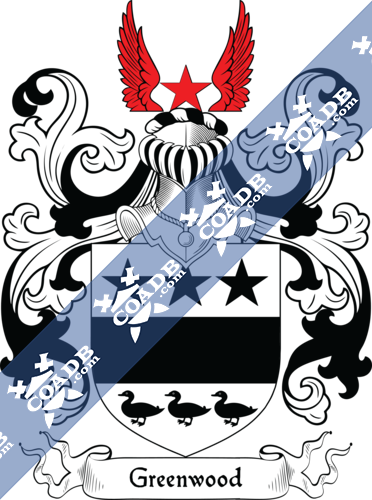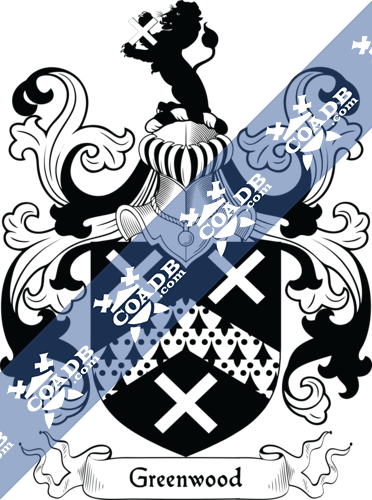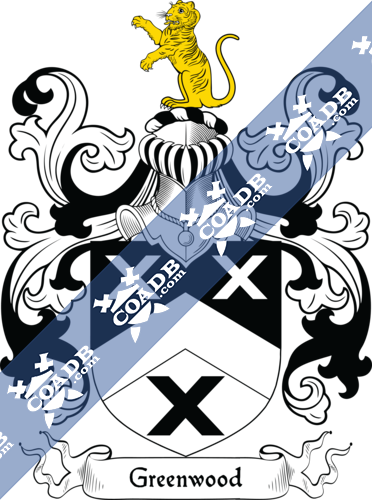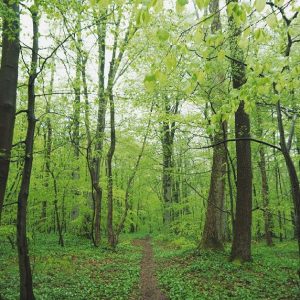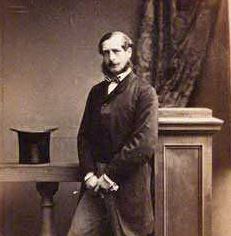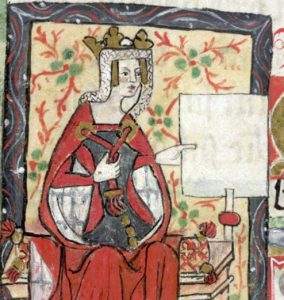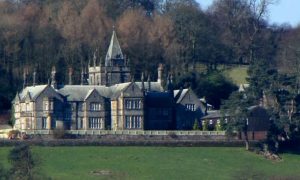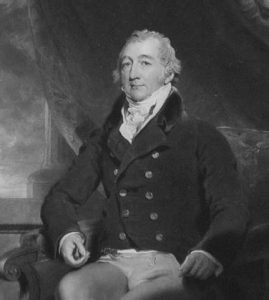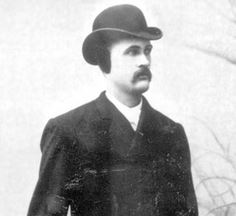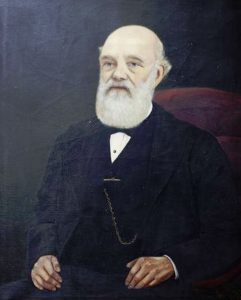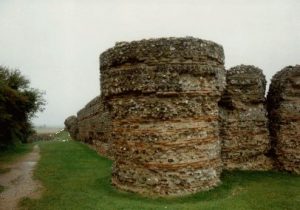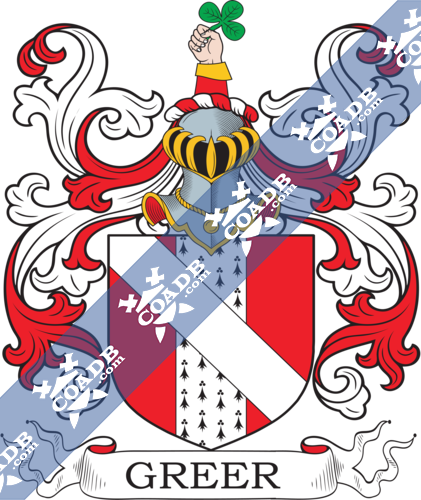Greenwood Family Crest, Coat of Arms and Name History
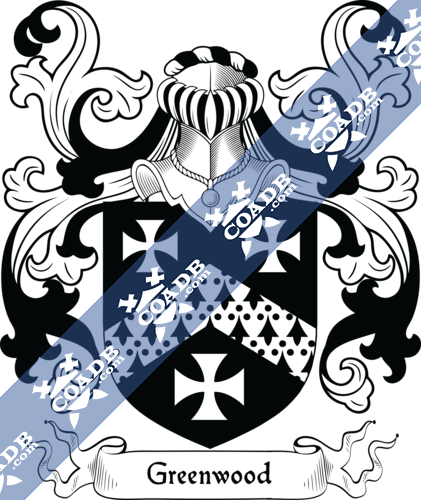
Greenwood Coat of Arms Gallery
Don’t know which Coat of Arms is yours?
We can do a genealogical research. Find out the exact history of your family!
Learn MoreOrigins:
There are two theories about the origins of the surname Greenwood. Both of them agree that it is of English origin, however they disagree on exactly who the original progenitor of this name was.
According to a group of scholars and historians the name Greenwood is actually derived from the ancient words “grene” and “wuddu”, literally translated as “green” and “forest”. As we can see today, this literal translation holds true even in modern English. According to this theory this is a “topographical” surname. This means that it was given, or taken by a family or a person who either wanted to be associated with a “green” wood in real life, or the public wanted to associate him with a green forest. These historians claim that the first person to bear this name was John del Grenewode. who is said to have existed in the time of Edward the first of England and resided in Wakefield, Yorkshire during the polls of 1275. The next historical mention of this name is of a couple Johanna and Ricardus, both of whom lived in the latter half of the fourteenth century. They took the name “de Greenwood” instead of simply Greenwood. However by the sixteenth century the name “greenwood” had become common and church records show that many people had adopted this spelling by that time. The name Greenwood was introduced in the United States of America by John Greenwood who sailed on “Bonaventure” in 1634 and reached Virginia.
The second popular theory held by historians is that the name Greenwood was first taken up by a gentleman of Anglo Saxon decent who took the name of Wyomarus de Greenwode. According to this theory the name was used by Wyomarus before the time of Edward the First. They say that Wyomarus de Greenwode was caterer and the provider of Royal Provisions to the Empress Maud, mother of King Henry the Second. Some accounts describe her name as being Matilda. According to these accounts, Greenwood was the name of landed gentry and they had a coat of arms bestowed upon them through Royal decree.
Variations:
There are not many variations of the name as the root words that make up the name have remained remarkably similar throughout the ages. Here are some variations in common use today.
Greenwood, Greanwood and Greenwude are all phonetically similar. Greenwoode, Greenewood and Greenewude have additional alphabets but do not have any change in pronunciation. Grunewood and Greenwud may be pronounced with a very small change in the phonemes but by and large they remain the same.
History:
The history of the name depends upon the origin story. If we consider the name to have been derived from an unknown person who resided in the thirteenth century, then historians state that the name came under French influence and was subsequently changed to “de Greenwood”. This remained in vogue till the fifteenth century, when the name was changed back to the Anglican “Greenwood”. There have been little or no changes to the name since then. This is partially due to the fact that the name is made up of two ancient words, which have themselves not changed much through the centuries. “Grene” has changed to “Green” with the same pronunciation and “Wudu” has changed to “wood” with a slight phonemic shift. Therefore the name “greenwood” has also remained almost the same.
If we are to consider the theory that this name is from the Royal caterer of Queen Maud, the historians state that Wyomarus built a stately mansion in Heptonstall as per Royal decree and named it “Greenwood Lee”. This is given credibility by the presence of another building about three fourths of a mile from the mansion called High Greenwood. According to these historians the presence of a large number of buildings and locations named “Greenwood” in this general area is testament to the fact that Heptonstall was once home to the Greenwood family. According to this theory, the Greenwoods then migrated to other parts of the world and many reached the present day USA.
Early notables include Johannes de Grenewode (et Agnes uxor ejus, ffarmour de Grunge, Huddersfield) and Johanna de Grenewod recorded in 1379 AD in Poll Tax records of Yorkshire. Early marriages include Alice Greenwood to John Leame at St. Peter, Cornhill in 1539, as well as Henricus Greenwood to Agnete Rende in 1599 St. Martins in the Fields, Westminster.
In his book Patronymica Britannica, a Dictionary of Family names in the United Kingdom, by Mark Antony Lower, he notes the following regarding this last name: “I find no specific locality called by this name; but it is quite probable that in old times many a sylvan district gave a name of distinction to lovers of ‘vert and venison,’ whose abode was the ‘merrie green-wood’.”
Bernard Burke’s Landed Gentry mentions three branches of this family: Greenwood of Swarcliffe Hall, Greenwood of Brookward, and Greenwood of Broadhanger. The first line mentioned is an old family seated in Yorkshire for generations, with one more recent notable being James Greenwood who settled at Braithwayt. Another member of this line was John Greenwood (1763-1862) of Keighley and Swarcliffe Hall, the son of John Greenwood, who married Sarah Sugden and had the following children: Frederick, Edwin, Ann, Matilda, and Sarah Hannah. Another member of this line mentioned was Frederick Greenwood (1797-1862) who married Sarah Staniforth and had a son named John. The second line mentioned has been long settled in the south of England, a family of Greenwood Leghe in county Yorkshire. Members of this line include William Greenwood, of Dewsbury, who married Mary Beswicke and had John Beswicke Greenwood and William Greenwood. Another notable of this family is William Henry John Greenwood of Brookwood Park, Woodcote, Alresford, and Hampshire who succeeded his father in 1872. The third line mentioned is related to the first and John Greenwood of Broadhandger (1870-1871) is the notable mentioned. He married Fanny Collyns of Kenton and Devon and had four children: Charles Williams, Granville George, Alice Mary, and Lucy.
Early American settlers include John Greenwood, who was recorded leaving the port of London in January of 1634 on a ship bound for Virginia, as well as Samuel Greenwood, recorded in Boston in 1670 who married Mary (last name unknown) and had the following children: Mary, Samuel, Priscilla, Miles, Peter, and Martha. Another early settler in America was Thomas Greenwood of Cambridge, who married Hannah Ward of Newton and had children John and Thomas, and later married Abigail (surname not given) and had children James and William.
Notable People with the Surname Greenwood:
Al Greenwood (b. 1951) Renowned musician. Resides in the United States.
Alfred B. Greenwood (1811–1889) Renowned attorney at law, alter went on to take part in politics.
Bob Greenwood (1928–1994) Famous baseball player who played in the Mexican league.
Chester Greenwood (1858–1937) Renowned inventor. He held the patent for the invention of the “earmuff”
Dick Greenwood (b. 1940) Athlete, played rugby for England.
Frederick Greenwood (1830–1909) One of the most famous journalists of the late twentieth century
Joan Greenwood (1921–1987) Renowned starlet of Hollywood golden age
Jonny Greenwood (b.1971) Renowned musicians who rose to fame as a member of the heavy metal band “Radiohead”
Will Greenwood (b. 1972) Dick Greenwood’s eldest son, he is a renowned athlete who plays Union Rugby for England.
Blazons & Genealogy Notes
1) (cos. Derby and York). (Brookwood Park. co. Hants). Sa. a chev. erm. betw. three saltires ar. Crest—A demi lion or, holding betw. the paws a saltire ar.
2) (co. Lancaster). Sa. a chev. erm. betw. three crosses pattee ar.
3) (Norwich and co. York, 1594). Ar. a fesse betw. three mullets in chief and as many ducks in base all sa. Crest—A mullet betw. a pair of duck’s wings expanded ga. Motto—Ut prosim.
4) (Burgh Castle, co. Suffolk). (Castleton, Greenwood, and Norton Bruin, co. Oxford). Sa. a chev. erm. betw. three saltires ar. Crest—A lion sejant sa. holding a saltire ar.
5) Per chev. sa. and ar. a chev. erm. betw. three escallops or. Crest—A tiger sejant or.
6) (Swarcliffe Hall, co. York). Per chev. sa. and ar. a chev. betw. three saltires couped counterchanged. Crest—A tiger sejant or.
7) Or, on a fesse gu. betw. three leaves vert as many escallops ar.

